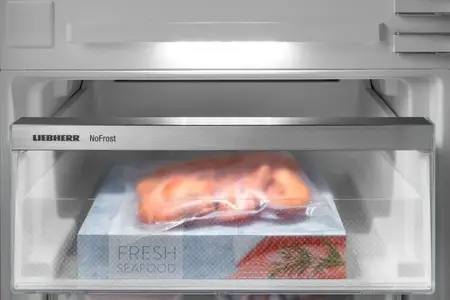When the washing drum smells and freshly washed laundry no longer has that clean scent, it’s time for cleaning. It’s completely normal for washing machines to start transferring strange odors to laundry over time. Ideally, you should prevent this by regularly cleaning all areas both outside and inside the machine. We explain why washing machines start to smell and how to clean them properly.
Why Does the Washing Machine Smell Unpleasant?
The reason for a musty smell from your washing machine is residue that isn’t visible at first glance. When textiles are washed, dirt from the laundry gets into the drum and hoses. Incompletely dissolved detergent residues, hair, or lint can remain and provide an ideal breeding ground for bacteria and mold. Besides dirt and detergent residues, water residue can also remain in the detergent compartment, seals, and hoses. Low temperatures do the rest: wash cycles between 20 and 40°C save energy but don’t kill all germs.
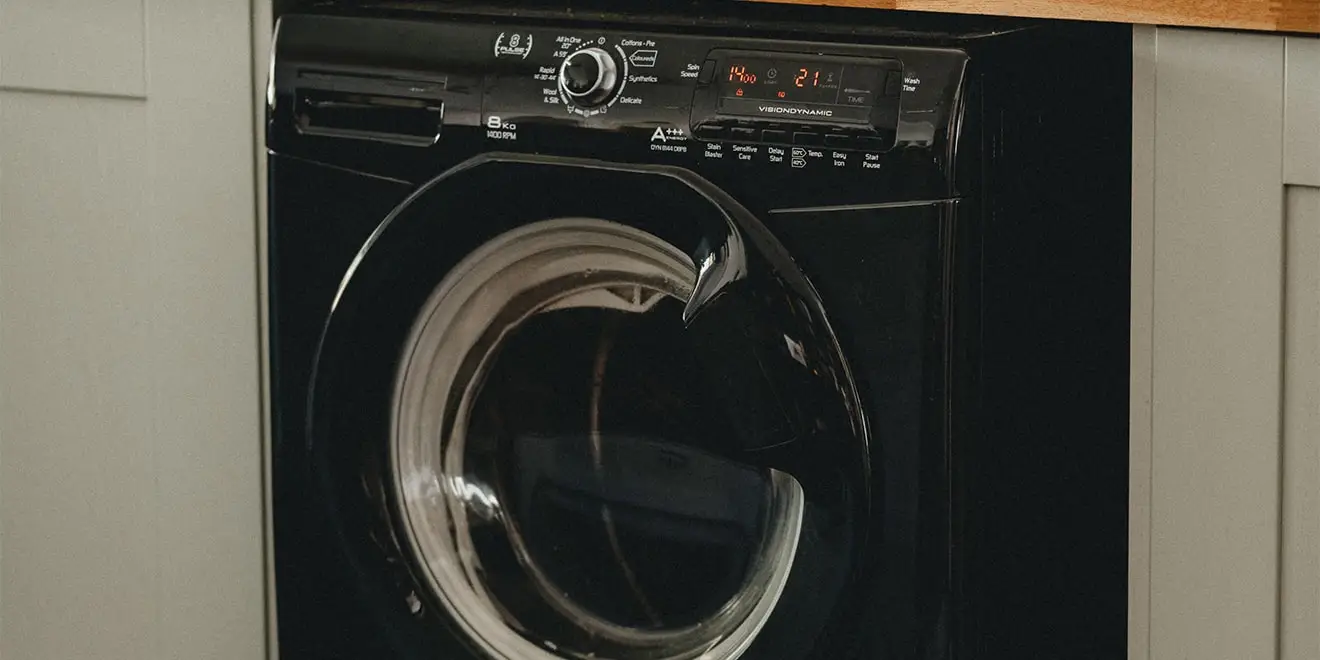
How Should You Clean the Washing Machine?
Exterior Housing and Rubber Seals
It makes sense to work from outside to inside. Prepare a cloth and a bucket with one liter of water and 20 grams of citric acid powder. You can safely clean the entire exterior housing with this, whether glass, plastic, or metal. If you store your detergent on the top surface, residue can accumulate there. A thick layer of dust can also collect in and on the glass door over time. Clean these areas thoroughly as well.
Next, clean the rubber seals. Water often collects below the inlet. Absorb the remaining water with a cloth. Add about 30 grams of citric acid to one liter of fresh water. You can now wipe all rubber seals with this without risking damage to the seals.
Cleaning Detergent Compartment from Residue and Mold
Remove the detergent compartment. Some are screwed to the device, others just hung. Usually, the compartment can be easily removed in all models. Remove coarse dirt and detergent residues under running water and then place it in the citric acid mixture. Make sure the detergent compartment is completely submerged. Let it soak for a few minutes before rinsing with clean water and reinserting it into the machine. For hard-to-reach corners and spots, you can use an old toothbrush.
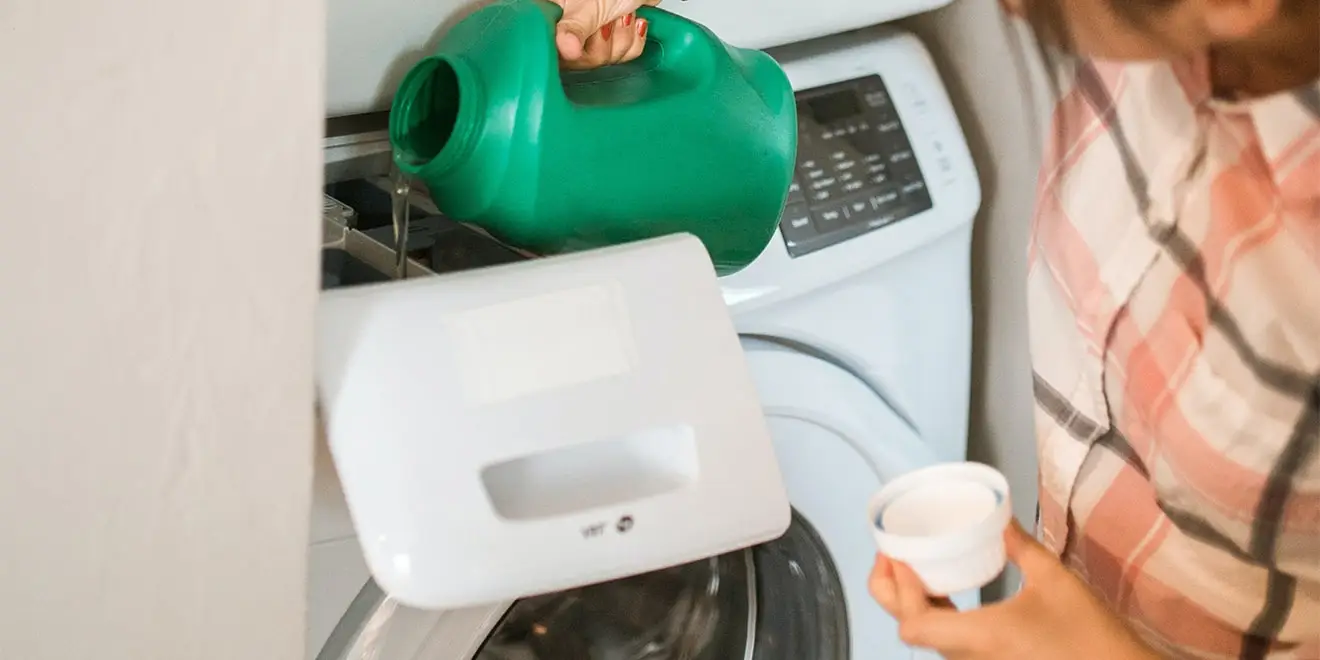
Empty and Clean the Lint Filter
The lint filter is one of the most important parts of a washing machine. It filters everything out of the wash water that doesn’t belong in the drain hose. It prevents the drain from clogging. If the lint filter becomes clogged, the washing machine will display an error message during a wash cycle. In such a case, you must pump out approximately eight liters of water while the front door remains electromagnetically locked. It’s better to prevent this by cleaning your lint filter at least twice a year.
Even with an empty washing machine drum, you should get a flat container to catch any remaining water. Alternatively, you can use towels to absorb it. Also prepare a damp cloth again. Open the flap located at the bottom right or left of the front on most washing machines. Place the container or towel under the opening. Now open the lint filter. There are differences here depending on the model. You either need to turn it or release a lever to pull it out. Then you can remove the filter and rinse it under warm water. If needed, you can also use an old toothbrush to help clean it.
Also wipe out the channel where the filter was located with a damp cloth. Coarse dirt is best removed by hand. Don’t worry if you find hair, small stones, or even whole socks – this is completely normal. For a thorough cleaning, it makes sense to flush the channel with water. Place the emptied flat container under the channel opening again. Pour about one liter of water into the wash drum. The water will then drain directly through the filter channel. If clear water runs out, the channel is clean and the lint filter can be reinserted. Afterwards, securely close everything so that no water leaks during washing.
Drum Cleaning
Most machines automatically indicate when drum cleaning should be performed after several wash cycles. For this, simply run an empty wash cycle at high temperatures of at least 60°C – ideally 90°C. Usually, an empty wash cycle is sufficient. However, if you want to be sure, add a natural cleaning agent.
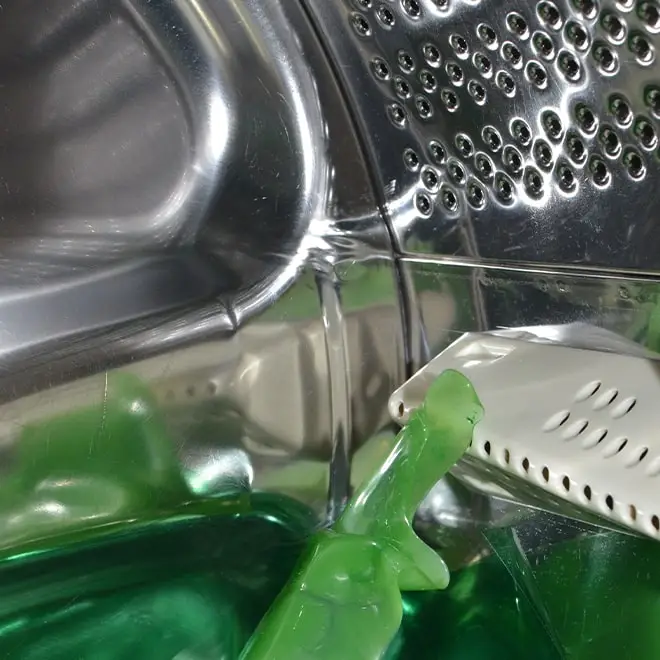
What Should You Clean the Washing Machine With?
While there are descalers for washing machines, you can also use natural and inexpensive household remedies that achieve the same effect. Citric acid is one of them. It’s particularly popular for descaling as it barely affects the seals. However, pay attention to the correct dosage: add 7 to 8 tablespoons of citric acid directly into the empty drum. The acid is ideally distributed during an empty wash cycle at high temperatures.
Pause the cleaning halfway through for about an hour. Alternatively, you can simply turn off the washing machine. You might wonder now – how is the washing machine supposed to clean itself? Here’s the explanation: Under the drum of the washing machine is the heating element. It’s particularly affected by limescale deposits. The extent of deposits depends on the hardness level of your regional drinking water. With particularly hard water, limescale deposits can be more severe than with soft water. The limescale layer on the heating element can cause heat buildup. If heat buildup has already occurred, you’ll notice it quickly because the washed laundry comes out cold and isn’t properly clean anymore.
After a one-hour pause, you can continue the wash cycle or start a new one. Wait until the drum cleaning is complete. Afterwards, you can wash as usual. Another advantage of this household remedy becomes apparent when you open the door, as it smells really clean like lemon!
Natural Descaling: Natural Home Remedies
We advise against cleaning the washing machine with vinegar. The reason is that vinegar attacks the components and damages them over time. The only part you can wash with vinegar is the detergent drawer. It’s better to use baking soda to clean the washing machine. This household all-rounder is also ideal when it comes to cleaning the washing machine. Add 50 grams of baking soda to the detergent compartment and run the washing machine at at least 60°C.
A side tip: Baking soda can support the effect of detergent when added together. It softens the water and replaces fabric softener. It also neutralizes bad odors in the washing machine and laundry.
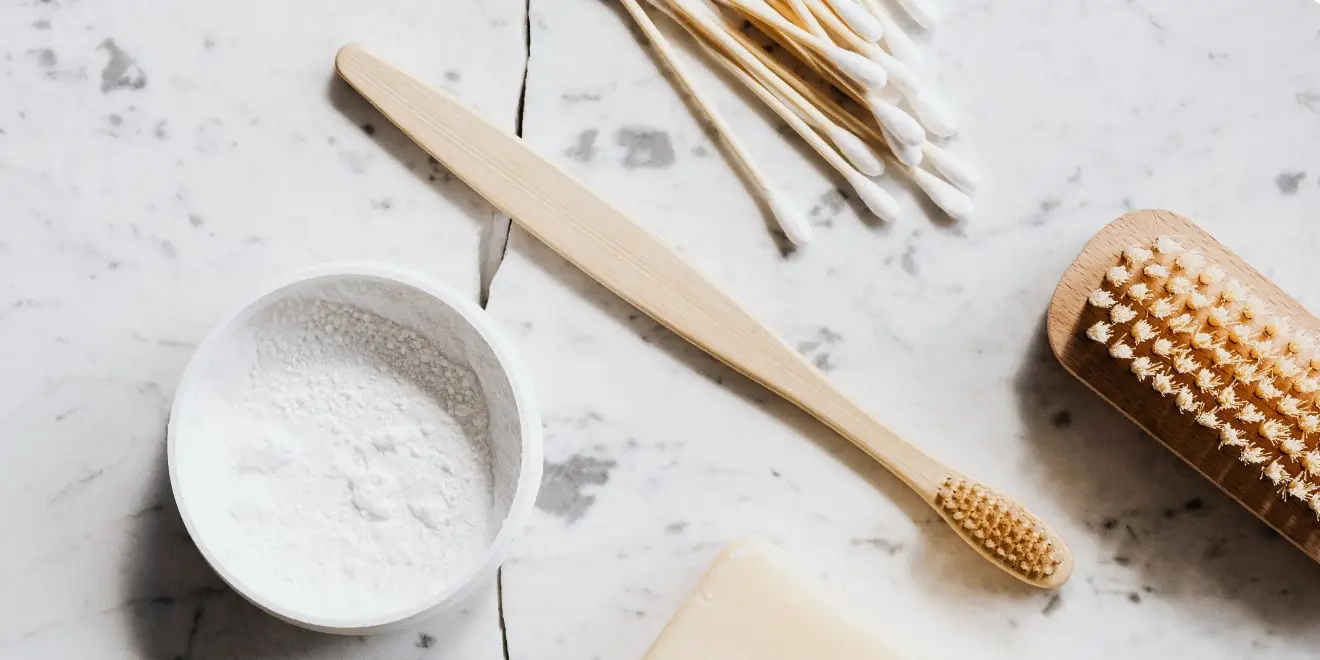
No Baking Soda?
Another helpful home remedy is baking powder. Works just as well and everyone has it at home. Put 2 packets in a small bowl and mix with some water to form a paste. Then put this paste in your washing machine’s detergent compartment and start the wash cycle at high temperature.
Wonder Product Washing Soda
Ever heard of washing soda? Also a great home remedy when you want to clean the washing machine: Fill about 50 grams of soda in the detergent compartment and run an empty wash cycle. Alternatively, when washing white laundry, you can also add two tablespoons of soda for pre-treatment to the compartment. This not only bleaches white laundry but also makes colors shine and removes grease and protein stains. However, be careful with dosing for colored laundry, otherwise the wash load will get patchy bleach spots.
Descaling with Dishwasher Tablets
You heard right – the tablet is very suitable for descaling the washing machine. Put one dishwasher tablet directly into the empty drum and start the program at minimum 60°C hot water. By the way, this also works in the dishwasher. An empty run never hurts!
How Often Should You Clean the Machine?
Depending on the area of the washing machine, cleaning should be performed more or less frequently. Of course, this depends on many factors, such as how often you do laundry. You can clean the outer housing, detergent compartment, and door weekly. The lint filter can be cleaned every two months. If the machine is used less frequently, cleaning every six months is sufficient.
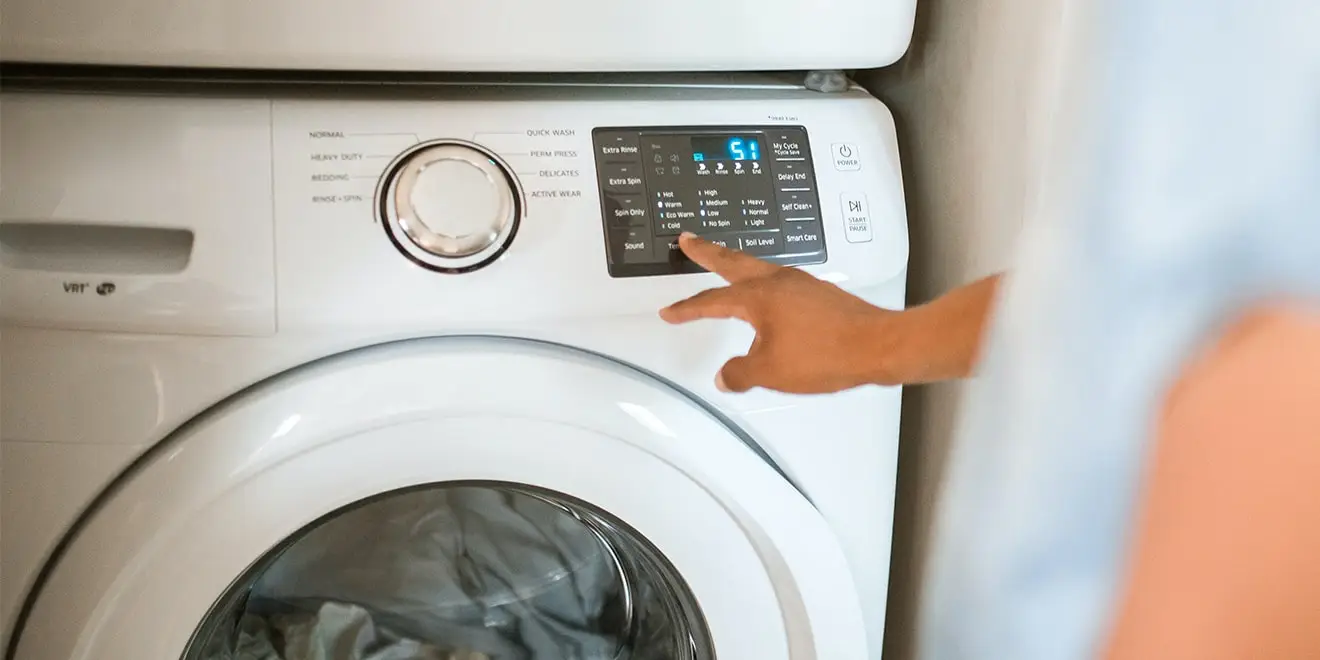
Preventing Limescale Build-up in Your Washing Machine
In fact, detergent dosage is one of the most important factors. Those who have looked into dosing instructions know that you should adjust the amount according to water hardness. This is because detergent contains water softeners. These help the detergent work better and slow down limescale formation on hoses and heating elements compared to not using softeners. So make sure to dose the detergent correctly. Dosing instructions can be found on every package, as manufacturers are legally required to provide them. This way, you’ll need to clean your washing machine much less frequently.
How Do I Prevent Odors and Bacteria?
We usually use too much detergent, which leads to residue. Therefore, dose correctly and always leave the detergent compartment and washing machine door open after cleaning so residual water can evaporate.
Low washing temperatures are important for saving energy. However, wash at high temperatures occasionally to kill bacteria and eliminate bad odors. Towels, cotton bedding, washcloths, kitchen towels, and cleaning rags can safely be washed at 60°C.
Regularly use household remedies. They work wonders for little money. For white or colored laundry, add a tablespoon of soda to the detergent. Alternatively, you can use baking soda.
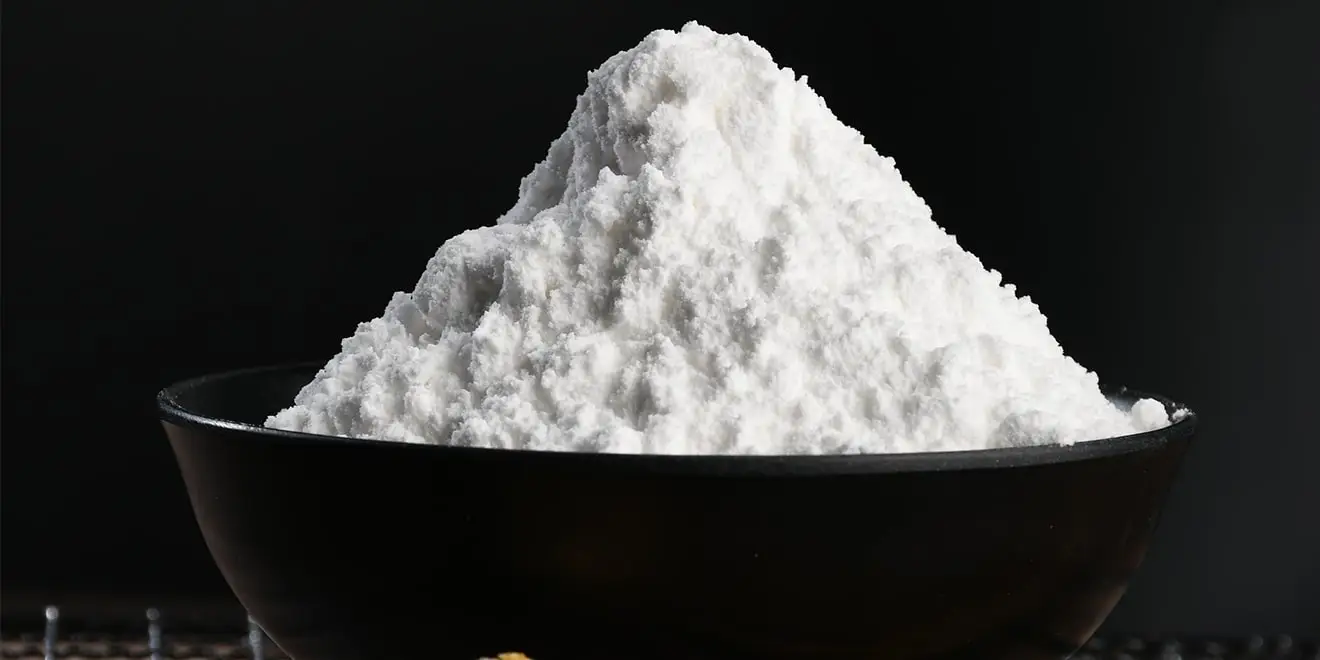
Conclusion: Smell and Dose Correctly
If we maintain our washing machine properly, it can serve us faithfully for many decades. Depending on the level of soiling, washing frequency, and water hardness, it may need our help at different intervals. Pay attention to the cleanliness and smell of your laundry. This way, you’ll quickly recognize your machine’s needs. Don’t overdose or underdose. Regularly use the mentioned household remedies to extend your washing machine’s life. Now you know how to clean your washing machine. This will save you money on a new appliance and avoid trouble with mishaps.





